#house of vettii
Explore tagged Tumblr posts
Text
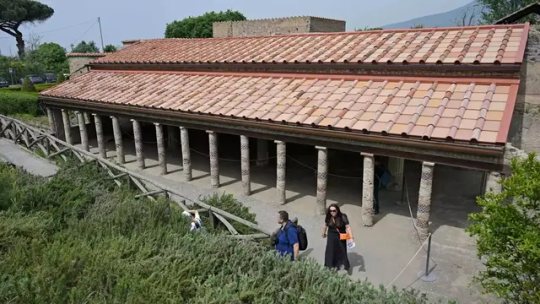
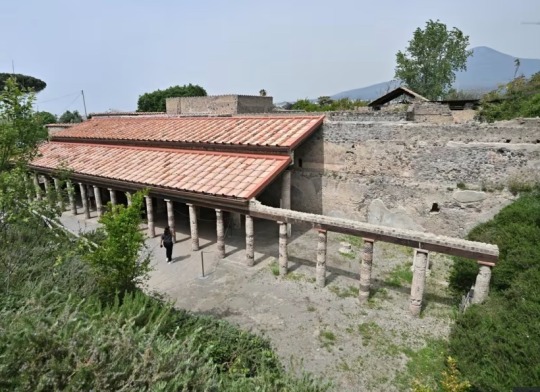
‘Ancient Roman’ Solar Roof Tiles Power Pompeii Villa
Ancient Roman ruins at Pompeii have been fitted with invisible solar panels, in a move that will contribute to the archaeological site’s sustainability efforts and cut costs. The innovative panels, which blend into the background by imitating traditional materials, were installed on the House of Cerere, on a thermopolium — a Roman snack bar — and on the House of the Vettii, which recently reopened following 20 years of restoration work.
“They look exactly like the terracotta tiles used by the Romans, but they produce the electricity that we need to light the frescoes,” said Gabriel Zuchtriegel, the director of the archaeological park of Pompeii, in a press release.
Each year, 3.5 million tourists explore the vast ruins of the ancient Roman city, which was buried by the eruption of Mount Vesuvius in 79 AD. But due to Pompeii’s size, energy bills are expensive and conventional methods of providing power across the site can threaten its appearance.

“Pompeii is an ancient city which in some spots is fully preserved,” Zuchtriegel said. “Since we needed an extensive lighting system, we could either keep consuming energy, leaving poles and cables around and disfiguring the landscape, or choose to respect it and save millions of euros.” The new technology will help the archaeological site to cut energy bills and make it more enjoyable, he added.
The invisible solar panels — or “traditional PV tiles” as they are technically known — were created by the Italian company Dyaqua. They can be designed to appear like stone, wood, concrete or brick, and hidden on walls, floors and roofs, according to Elisabetta Quagliato, whose family owns Dyaqua, in the press statement.
“We are an archaeological site but we also want to be a real-life lab for sustainability and the valorization of intangible heritage,” Zuchtriegel said. “Our initiative is not merely symbolic. Through the million tourists who visit us every year, we want to send a message to the world: cultural heritage can be managed differently and in a more sustainable way.”
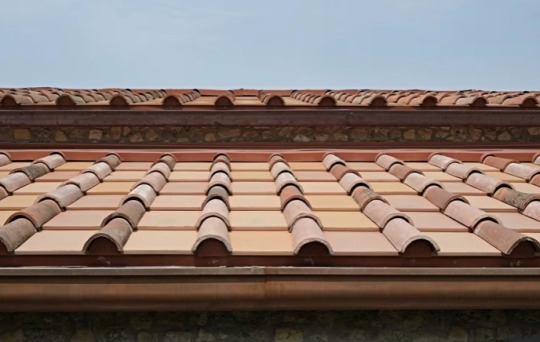

Other locations in Italy using the invisible solar technology are the commune of Vicoforte in Italy and, soon, Rome’s contemporary art museum Maxxi. Public buildings in Evora, Portugal, and Split, Croatia will also install the panels, according to the press statement.
Pompeii’s recent use of these panels is just the beginning, Zuchtriegel said. “From now on, we will be taking this solution into account for all future renovation and restoration projects.”
By Garry Shaw.
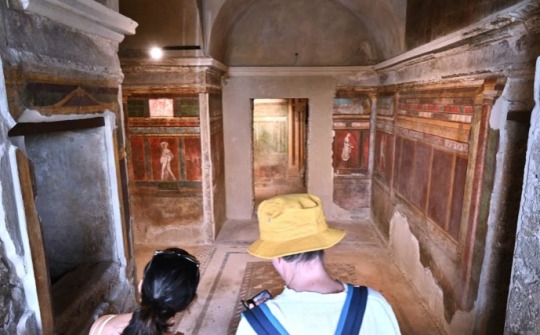
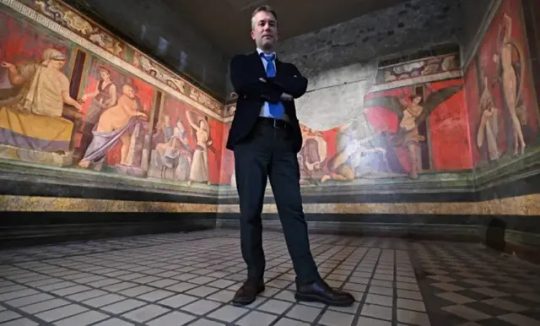
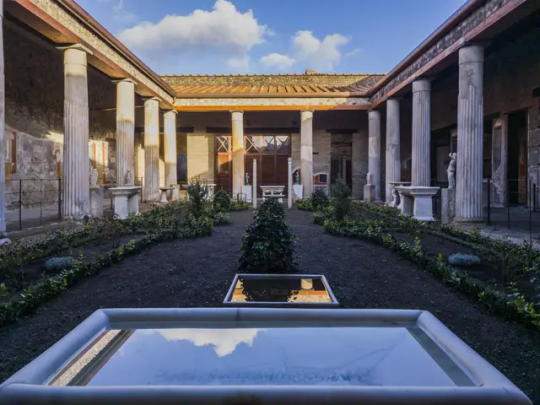
#pompeii#ancient roman#ruins#archaeological site#sustainability#house of cerere#thermopolium#house of vettii#heritage#cultural heritage#the art newspaper#classical studies
285 notes
·
View notes
Text




Frescoes. House of the Vettii, Pompeii.
Photos: @_silvia.vacca_ (Archaeologist • Photographer) IG
#Pompei#archaeology#original photographers#silvia vacca#fresco#roman art#House of the Vettii#archaeological site#ancient rome#pompeii#roman empire#pompeii archaeological park
1K notes
·
View notes
Text
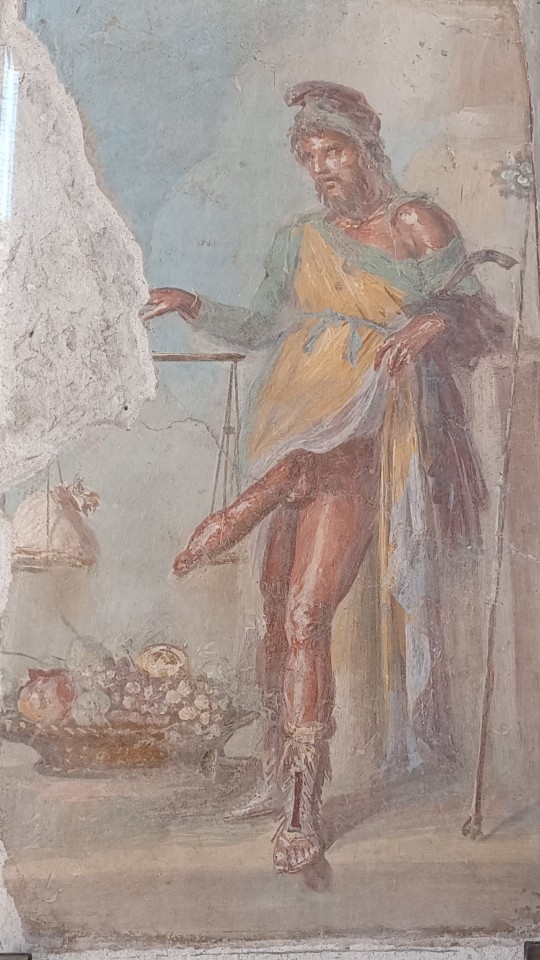



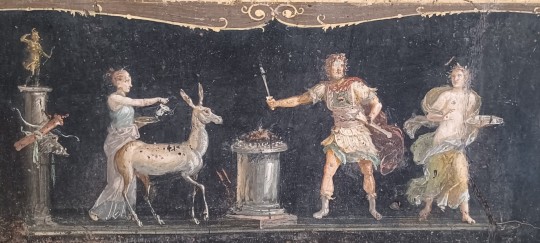
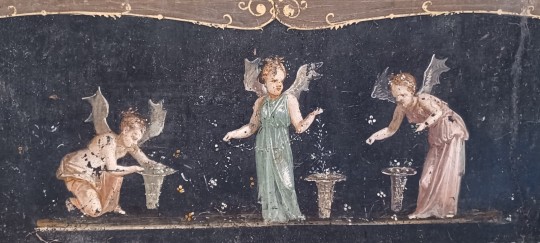

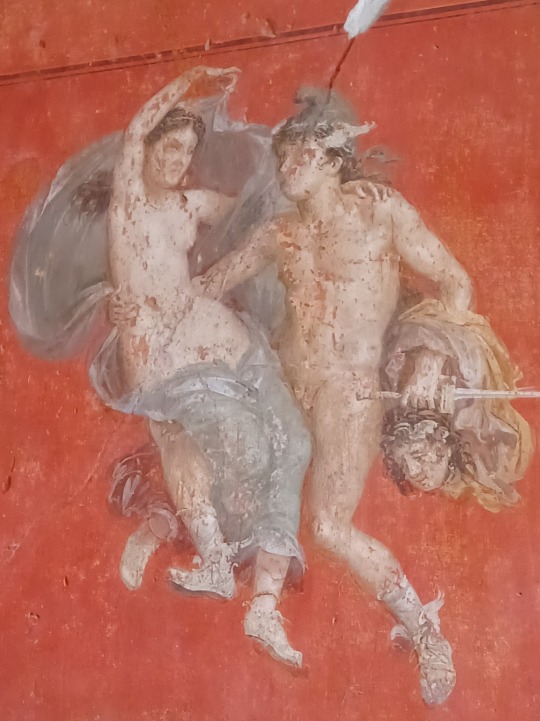

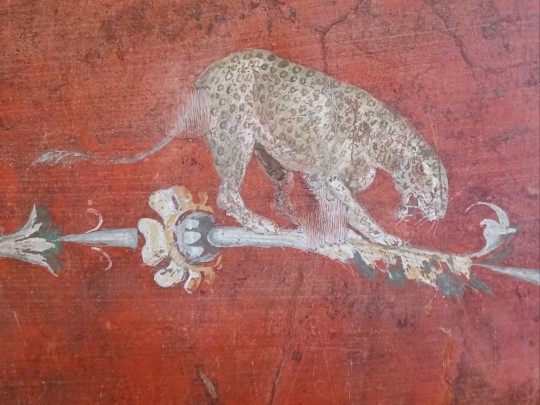
Casa dei Vettii (I sec. a.C. - I sec.), Parco Archeologico di Pompei, Napoli.
#pompeii#pompeii ruins#napoli#naples#art#archaeology#art history#ancient times#ancient rome#the House of the Vettii
349 notes
·
View notes
Text

House of the Vettii in Pompei, Campania region of Italy
Italian vintage postcard
#postal#house of the vettii#italy#historic#vettii#ansichtskarte#sepia#vintage#tarjeta#italian#briefkaart#photo#campania#house#pompei#postkaart#ephemera#postcard#postkarte#photography#region#carte postale
7 notes
·
View notes
Text
4 notes
·
View notes
Text
the teacher told us to not wait until last minute to do this project because it takes time, which is why i waited until last minute and crammed all the work into 2 days <3
#i doubt im getting a 100 on this mess#im sure my objects are not 'varied enough' in my defense i was having trouble finding varied examples#like every 4th style painting image i could find was from house of the vettii#and like they're in different rooms so they're different paintings i think they should count idc
4 notes
·
View notes
Text
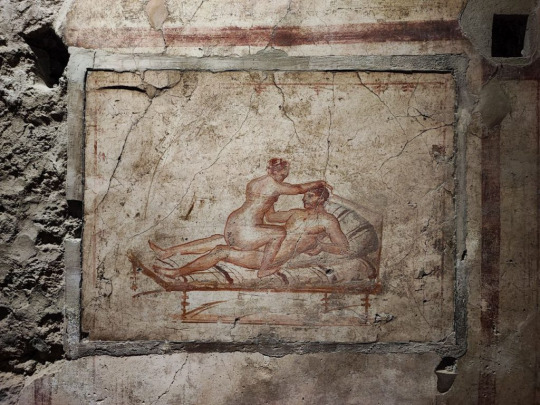
Erotic fresco at the House of the Vettii in Pompeii.
4K notes
·
View notes
Text

Buried 🌋🙇🏻♀️🕊️
Aprils work is Pompeii themed, inspired by photos I took in the House of the Vettii. The illustration is named Buried and is of the remains of the villa’s north courtyard, bathed in streaming morning light, with a mysterious occupant. Even though this scene is modern day, the girl is in Roman dress looking at the viewer. And oh what’s that? She’s slightly transparent...👻
#tagamemnon#flaroh illustration#pompeii#roman history#roman mythology#illustration#roman archaeology#ghost art#myth art
1K notes
·
View notes
Text
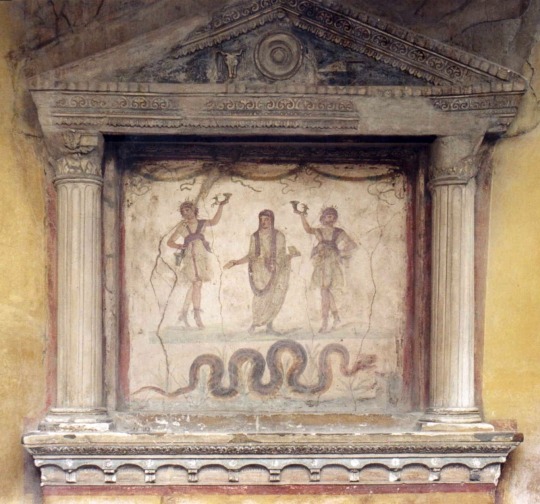
In Ancient Rome, snakes were not feared and hated to the same degree that they are today. Every household had a shrine - the lararium where the spirit of the household (the genius) lived with the household's guardians (the lares). The genius was often represented in artwork as a snake, and snakes also often represented the spirits of ancestors and sometimes (more figuratively) their immortality in the afterlife.
Image - Lararium in the House of the Vettii in Pompeii, photo by Patricio Lorente (licence CC BY-SA 2.5)
70 notes
·
View notes
Text

The punishment of Ixion for his attempted rape of Juno. At the far left, Vulcan binds Ixion to the wheel upon which he will turn for eternity. In the center, Mercury, holding his caduceus, stands with Nephele ("Cloud") at his feet. At the right, Juno, attended by Iris, looks on. Fresco in the Fourth Style from the eastern wall of the triclinium in the House of the Vettii (VI.15.1), Pompeii.
#classics#tagamemnon#Ancient Rome#Roman Empire#Pompeii#classical mythology#Ixion#art#art history#ancient art#Roman art#Ancient Roman art#Roman Imperial art#fresco#Fourth Style#Casa dei Vettii
177 notes
·
View notes
Photo
Cool. Nice garden. Love the frescoes. 😉
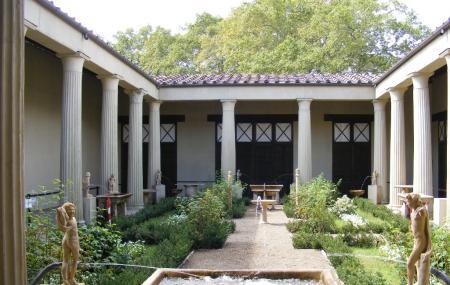
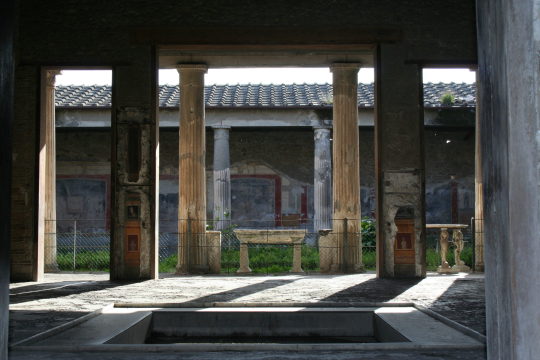

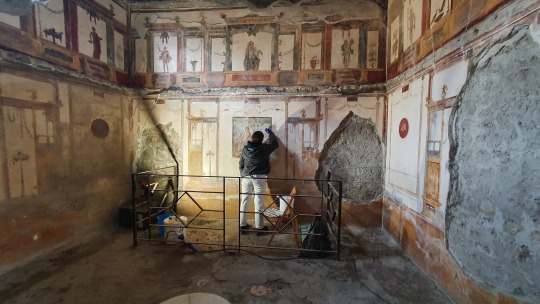

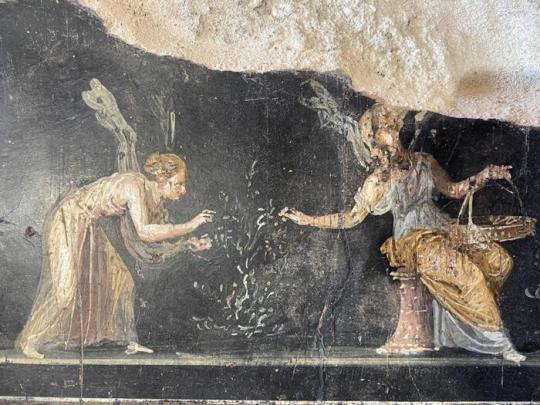

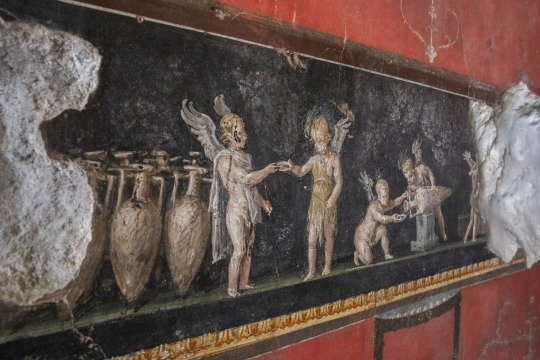
The House of the Vettii in Pompeii Reopens
The House of the Vettii, one of the largest and richest homes in Pompeii, prodigiously endowed with a fresco of Priapus that has become an icon of the city, reopens to the public on Tuesday after years of complex restoration.
The House of the Vettii was the home of Aulus Vettius Restitutus and Aulus Vettius Conviva, freedmen brothers who made a fortune as wine merchants and ascended the social ladder. Restitutus was a candidate for aedile, a magistrate responsible for holding public games and the maintenance of public buildings. Conviva was an Augustalis, a priest of the cult of the deified Augustus, a position of civic importance that was more akin to a magistracy. In this role he would have funded major public works projects.
The Vettii bought the house, originally built in the 2nd century B.C., after the earthquake of 62 A.D. It was in a tony neighborhood that many of the wealthy homeowners had left rather than rebuild. When the rich moved out, the nouveau-riche moved in. Freedmen who had made big bucks in trade like the Vettii were a prime example of the trend. They bought the aristocratic villa, repaired it and expanded it, adding a huge peristyle garden with statues and fountains. Every room was lavishly painted with frescoes on mythological motifs, telegraphing their wealth and the new status it bought them. Priapus, his massive phallus balancing on a scale against a bag of money, welcomed visitors in the vestibule of the house. Two large bronze strongboxes were placed in the atrium so everyone who got past Priapus would be confronted with the the most literal possible representation of the wealth of the Vettii.
The frescoes are mostly in the Pompeiian Fourth style, a combination of the previous three styles (faux marble veneers from the first, architectural trompe l’oeil from the second, ornate, stylized ornament from the third). The Vettii frescoes provide unique insight into the transition between the Third and Fourth style of mural painting. There is also a remarkable series of striking black and red frescoes depicting groups of cupids performing a variety of tasks, mythological ones like celebrating a festival of Bacchus and a festival of Vesta, sure, but of particular note are the representations of daily work, including the gathering and pressing of grapes, buying and selling the wine, dyeing and cleaning clothes in a fullery, picking flowers and making garlands for sale, making perfumed oil and making coins. The cupids are also captured at leisure, hunting on goat-back, racing in chariots pulled by deer and taking part in an archery contest.
The room adjacent to the kitchen was painted with a series of explicit erotic frescoes. It may have been a visual menu of options offered by an enslaved prostitute Eutychis who advertises her services for two asses (plural of as, the lowest-value Roman coin) on a graffito at the entrance of the house.
The domus was first excavated between late 1894 and early 1896. In the 1950s reinforced concrete roofs were added to the peristyle to protect the architectural remains from the elements. It was no longer protecting it, however. On the contrary, the flat concrete roof was unsound and directly contributing to water infiltration and damage.
Already affected by works in 1995, when the problem created by the concrete roofs of the 50s was evident, the house was partially reopened in 2016, after 12 years of closure and then closed again after 3 years for further restoration. Interventions that involved the roofing but also the paintings, with the removal of the patina created by previous restorations.
The old concrete roofs have now been replaced with sloped roofs formed from hollow blocks on metal frameworks. The wooden roofs added in the 1990s are still functional but needed refurbishment, and a new rainwater drainage system was devised to integrate the new roofs with the existing drainage system.
Conservators also cleaned and conserved the wall and floor decorations and the fixtures of the garden. It was a painstaking process of cleaning, regrouting and integrating interventions from different periods with the aim of recovering the legibility of the images and colors.
#the house of the vettii in pompeii reopens#fresco of priapus#pompeii fresco#ancient artifacts#ancient art#archeology#archeolgst#history#history news#ancient history
317 notes
·
View notes
Text





House of the Vettii, Pompeii
Photos : © Pompeii - Parco Archeologico
The Vettii brothers were slaves, after being freed they became rich selling wine and became the lords of this beautiful Domus
#pompeii#pompeii archaeological park#House of the Vettii#roman domus#ancient rome#archaeology#archaeological site
627 notes
·
View notes
Text

This has got to be one of my favorite frescoes of Perseus and Andromeda, they way they have their arms over each other, Andromeda sitting on his lap as they fly and lifting her veil in an almost cutesy manner.
From House of the Vettii
#🎶I can’t believe that it’s finally me and you and you and me just us and Medusa’s severed head🎶#greek mythology#ancient greek mythology#greek pantheon#princess andromeda#andromeda#Perseus#perseus and andromeda#Medusa#roman fresco#fresco#perseus and medusa
39 notes
·
View notes
Text

Young Hercules strangles the snakes, sent by Juno, before the eyes of Alcmene, Amphitryon, and his father Jupiter in the form of an eagle, perched atop a burning altar
Fresco from the House of the Vettii, c. 62-79 AD, Pompeii, Italy
130 notes
·
View notes
Text

Roman Fresco of a Carpenter (1st Century CE), from House of the Vettii, Pompeii. House of the Vettii features a large assortment of fresco paintings in Pompeian 4th style. National Archaeological Museum, Naples
2 notes
·
View notes
